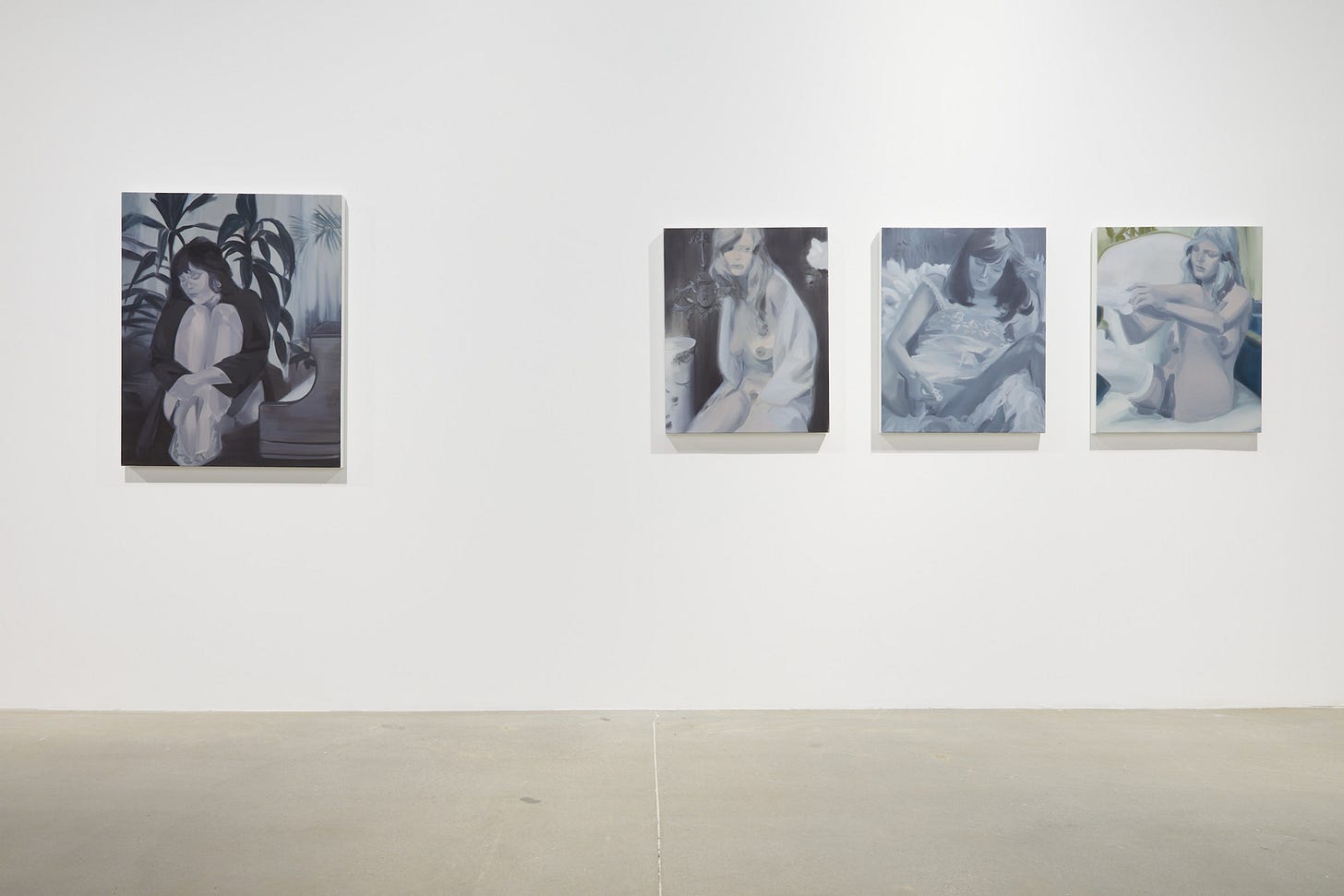It feels like art in Toronto is almost back to normal—Art Toronto was back in-person with a limited roster, opening nights are back, and you can spend a whole day gallery hopping. Last night, I went from a preview of Lorna Bauer’s show at Nicolas Robert to Alex Bierk’s opening at General Hardware. Both made me excited about art.
It’s also been making me think about this newsletter and Canadian Art Forecast in general. We’re facing an alarming deficit of art criticism and media in Canada. The closure of Canadian Art magazine cemented this downward trend. We still have people doing great work—though I generally find reviews to be more theory-based and academic. While I engage in that genre writing often while freelancing, Canadian Art Forecast began to err towards the fun. Not taking itself too seriously. The newsletter published short interviews that orbited artist’s practices and gave insight into their day-to-day lives (1, 2, 3), straight forward reviews (1, 2, 3), and some service journalism (1, 2, 3).
This feels right to me, and I’d like to continue on a path that makes art a) entertaining b) accessible c) relevant. I think I can focus more on the latter. I always joke, how do we make Canadian art sexier? I have some ideas, but I have to take more risks to pull it off.
One thing that has been glaringly obvious to me is what I’m not doing: being geographically diverse. 90 percent of my life is in Toronto and I often become lazy in my pursuit of what is happening in the rest of the country. I can make excuses about how busy I am, or the lack of a national art magazine to consolidate this information. But at the end of the day, it’s not right for a platform to call itself Canadian Art Forecast, and only focus on Toronto. Boring!
So! If you live elsewhere in Canada, I’d love to hear from you. What artists should I interview? Any galleries that deserve a feature? Or maybe an art trend that should be analyzed. I’m always open to suggestions, feedback, and criticism.
More on the last point in the next newsletter.
For now, a couple of excerpts from recent essays I’ve written:
Alex Kisilevich avoids the common depiction of birds as static figures, as seen on postage stamps and calendars, to capture the act of searching. The photographs in Hobby at Gallery 44 are saturated in colour, crisper than the eye can see. I feel as if I am in the tree with the bird, camouflaged amongst the maple wing seeds and branches. A subversion of the form of bird photography, the images share a familiar composition with the often kitsch venture. The optical and theoretical depth of Kisilevich’s photographs separates them from their counterparts, allowing an experience to form.
A series of paintings by Corri-Lynn Tetz, with monosyllabic titles such as Piano, Heels, and Ghost, depict women in various stages of contemplation. They share a palette as well—as if rose-coloured glasses were swapped out for a cool blue lens, dusting its subject with built-in melancholia. The monochrome greys and blues read like an x-ray—offering an interior perspective.
Are these women sad? Bored? Worried? The habit of showing beautiful women, especially in erotic images, as happy creates a flatness that Tetz fights against. Instead, Tetz portrays the underlying condition of the subjects’ glossy exterior. In Flower a woman looks down at the flower she is holding next to her vulva, her legs open. She is wearing a delicate chemise and her bangs are swept to the side as she sits on a bed of fun fur. The spectrum of textures is deftly painted by Tetz in a limited colour palette. The figure’s hand is hovering a few inches from her cheek in resignation mixed with boredom. The flower does not seem to give her any pleasure. The metaphor is almost too easy to draw.
Azza El Siddique and Teto Elsiddique’s exhibition, “fire is love, water is sorrow – a distant fire,” vibrates with “traces of a still-trembling past,” a line from a text written by Teto prior to his death in 2017. Azza, Teto’s sister, welded forms from his paintings onto steel sheets. The lines of melted metal in these pieces are slightly unsteady, as if humming. Teto’s paintings likewise capture a kinetic energy. Together, their works buzz with the presence of life—even in death.
A common misconception about art collecting is that you have to spend a lot of money to take part. This couldn’t be further than the truth. For a bit more than what you’d pay at IKEA for a generic print, you can buy an original work of art. Like most things in life, spending a bit more money upfront ensures its longevity. Living with art is engaging and enriching—it comes with a built-in story to tell around the dinner table. Who made it? When did you buy it? What drew you to it? Collecting art is an articulation of taste. The excitement of building an art collection is learning what your taste is, trusting your instincts, and then living with the bounty.
Online later today on sharpmagazine.com








